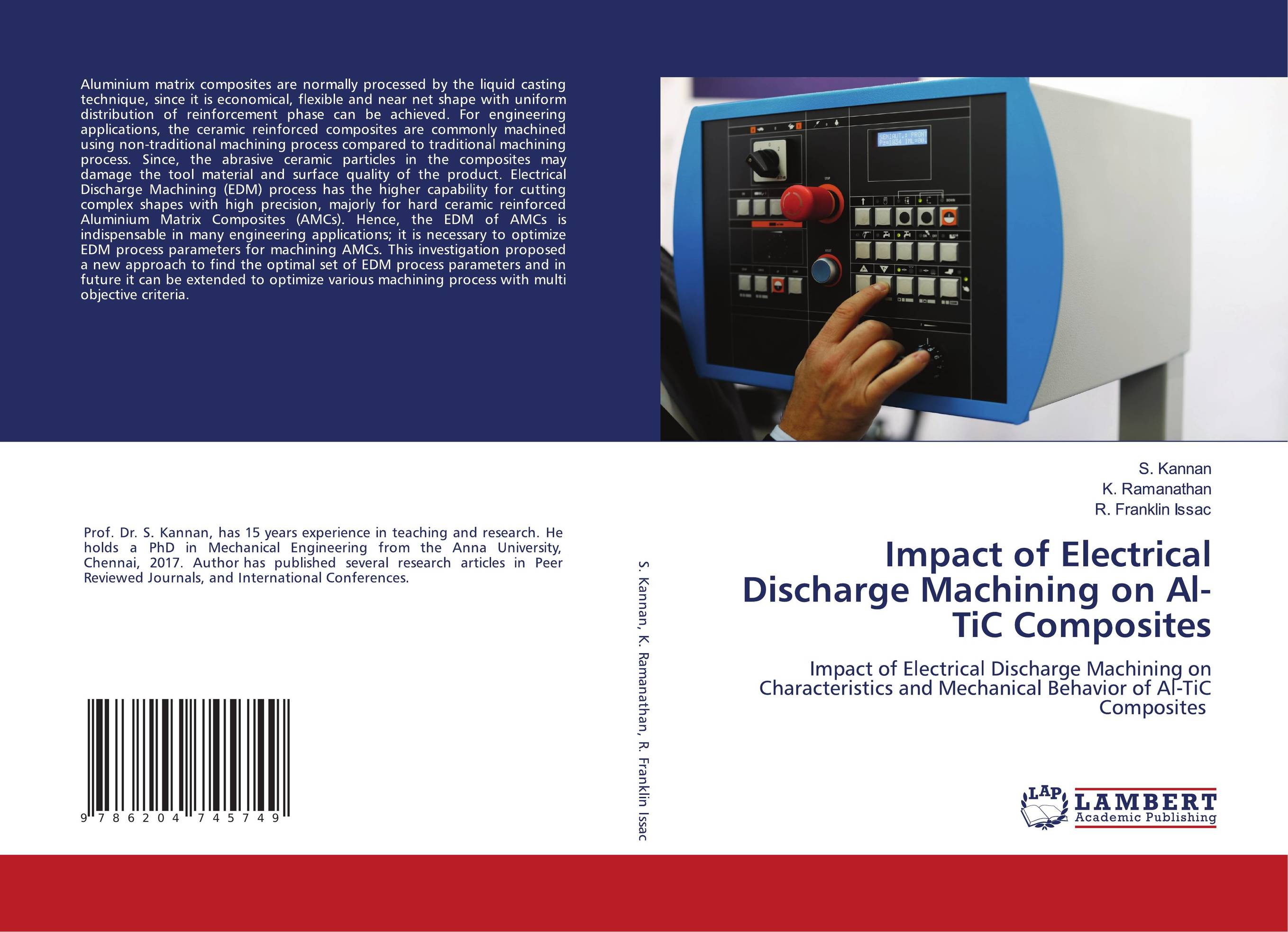| Поиск по каталогу |
|
(строгое соответствие)
|
- Профессиональная
- Научно-популярная
- Художественная
- Публицистика
- Детская
- Искусство
- Хобби, семья, дом
- Спорт
- Путеводители
- Блокноты, тетради, открытки
Impact of Electrical Discharge Machining on Al-TiC Composites. Impact of Electrical Discharge Machining on Characteristics and Mechanical Behavior of Al-TiC Composites

В наличии
| Местонахождение: Алматы | Состояние экземпляра: новый |

Бумажная
версия
версия
Автор: S. Kannan,K. Ramanathan and R. Franklin Issac
ISBN: 9786204745749
Год издания: 1905
Формат книги: 60×90/16 (145×215 мм)
Количество страниц: 132
Издательство: LAP LAMBERT Academic Publishing
Цена: 39802 тг
Положить в корзину
| Способы доставки в город Алматы * комплектация (срок до отгрузки) не более 2 рабочих дней |
| Самовывоз из города Алматы (пункты самовывоза партнёра CDEK) |
| Курьерская доставка CDEK из города Москва |
| Доставка Почтой России из города Москва |
Аннотация: Aluminium matrix composites are normally processed by the liquid casting technique, since it is economical, flexible and near net shape with uniform distribution of reinforcement phase can be achieved. For engineering applications, the ceramic reinforced composites are commonly machined using non-traditional machining process compared to traditional machining process. Since, the abrasive ceramic particles in the composites may damage the tool material and surface quality of the product. Electrical Discharge Machining (EDM) process has the higher capability for cutting complex shapes with high precision, majorly for hard ceramic reinforced Aluminium Matrix Composites (AMCs). Hence, the EDM of AMCs is indispensable in many engineering applications; it is necessary to optimize EDM process parameters for machining AMCs. This investigation proposed a new approach to find the optimal set of EDM process parameters and in future it can be extended to optimize various machining process with multi objective criteria.
Ключевые слова: Electrical Discharge Machining, Aluminium Matrix Composites, Titanium Carbide, X-Ray Diffraction analyzer, genetic algorithm, Tool Wear Rate Analysis



